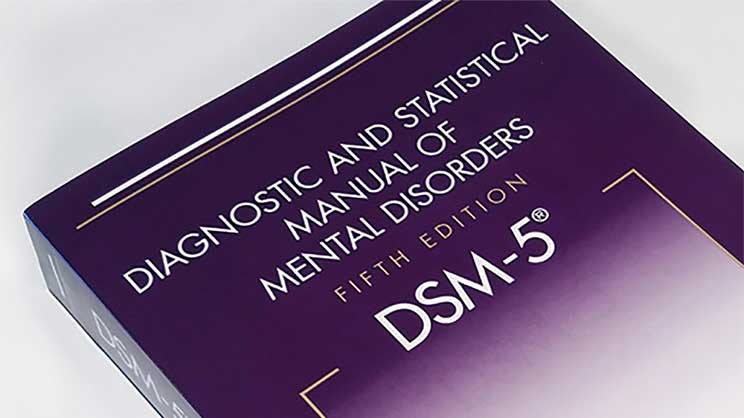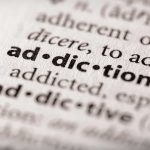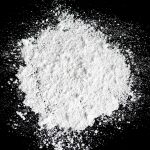In 2022, the fifth edition of the Diagnostic and Statistical Manual of Mental Disorders (DSM-5-TR) was published. This manual includes criteria for over 70 disorders.
Listed in the DSM-5-TR is drug addiction. Mental health clinicians can refer to the manual when diagnosing a person who may have a substance use disorder (SUD).
We will discuss the criteria for a substance use disorder in the DSM-5-TR and how to properly diagnose a patient using the manual.
What Is Substance Use Disorder?
A substance use disorder is characterized as a pattern of negative symptoms resulting from continued substance abuse.
Some people are more predisposed to developing substance issues compared to others. Factors such as genetics, family history, home environment, and more can play major factors.
Some of the most common substances of abuse are:
- opioids (heroin, fentanyl, morphine)
- cannabis
- stimulants (methamphetamine, cocaine, amphetamine)
- hallucinogens (LSD, peyote, magic mushrooms)
- sedatives
- inhalants
- anxiolytics usually referred to as hypnotics
- alcohol
All of the substances above can provide a slew of desired effects, activating the brain’s reward system with pleasurable feelings.
As the brain becomes accustomed to a vast amount of dopamine from drug use, substance dependence may form. This can lead to health problems as well as legal problems.
The DSM-5-TR Criteria For Substance Use Disorder
Compared to other clinical definitions of a substance use disorder, the DSM-5-TR criteria expand on addiction. It discusses the symptoms of all substance-related and addictive disorders.
Regarding substance use disorders, the DSM-5-TR lists 11 different diagnostic criteria, from interpersonal problems to risky use, that are typically common in people with SUD.
The 11 DSM-5-TR criteria for substance use disorders are:
- Taking larger amounts of a substance or for a longer period than first decided on
- Inability to cut down or stop use despite wanting to
- Spending lots of time seeking, ingesting, and withdrawing from substance use
- Experiencing drug cravings and urges to take substances
- Trouble handling work, home, or school responsibilities directly because of substance abuse
- Continuing to use even if it causes issues in relationships
- Abandoning social, occupational, or recreational activities in favor of using substances
- Taking substances even when it puts you into dangerous situations
- Recognizing physical or psychological problems directly related to substance abuse but deciding to use drugs regardless
- Finding you need more of a drug to achieve desired effects, such as drinking every day
- Experiencing harsher withdrawal symptoms that only subside with more substance abuse
Someone doesn’t have to identify with all 11 traits to be diagnosed with a substance use disorder. However, relating to a few or a majority of these may be a reason to seek treatment.
Diagnosing Substance Abuse Disorders With DSM-5 Criteria
Using the above criteria, identifying the severity of the substance abuse, and categorizing the person’s symptoms is how mental health professionals use the DSM-5 to diagnose SUD.
Understanding how far along someone is in their substance use disorder helps doctors and therapists recommend the right treatments.
Categories Of Substance Use Disorder Symptoms
The American Psychiatric Association (APA), the health professionals behind the DSM-5, recognizes four categories of substance use disorder criteria.
The four categories are:
- Impaired control: using more of a substance and wanting to cut down on use but not being able to
- Social problems: abandoning relationships, responsibilities, and recreational activities, and an inability to complete necessary tasks because of substance abuse
- Risky use: taking drugs in risky or unsafe situations
- Physical dependence: building tolerance and experiencing severe withdrawal symptoms when not under the influence
Severity Levels Of Substance Use Disorders
Similar to other mental health disorders, the DSM-5-TR lists three levels of substance use disorders.
The number of criteria the patient relates to, along with the family history of drug abuse and current health, determines a patient’s SUD severity.
What level a patient falls into can help doctors decide which addiction treatment programs are recommended for recovery.
The sooner a patient receives treatment, the less likely a SUD can develop into deeper issues.
The three levels of SUD severity are:
- Mild substance use disorder: patients identifying with two or three symptoms.
- Moderate substance use disorder: those identifying with four or five symptoms.
- Severe substance use disorder: relating to six or more symptoms. This usually describes physical and psychological addiction.
Substance-Induced Disorders
An offshoot of substance use disorders is substance-induced disorders (SID). The effects of substances cause substance-induced disorders.
There are many types of SIDs. Mental health disorders, obsessive behaviors, and physical impairments from drug use can all classify as SIDs.
Some examples of substance-induced disorders are:
- Substance-induced bipolar and related disorders: People with this condition experience manic episodes and signs of depression from drug withdrawal.
- Substance-induced obsessive-compulsive and related disorders: The development of a SUD can lead to other compulsions, such as a gambling disorder or sex addiction.
- Substance-induced sexual dysfunctions: The inability to achieve arousal or experiencing performance issues can be the mark of sexual dysfunction disorder.
- Substance-induced sleep disorders: Insomnia, disrupted sleep patterns, and oversleeping from drugs and alcohol can be a sign of this SID.
- Substance-induced anxiety disorders: People experiencing extreme anxiety and panic attacks due to drug use may have developed this condition.
Addiction Treatment In Massachusetts
Behavioral therapy can help people recover from many different substance disorders, such as alcohol use disorder, opioid use disorder, and cannabis use disorder.
At Northeast Addictions Treatment Center, we offer evidence-based therapy in our many different outpatient options that can get you or your loved one on the path to recovery.
Reach out to one of our drug specialists to learn more about our rehab facility in Quincy, Massachusetts.
Keep Reading:
- Dual Diagnosis Treatment Programs
- Signs Of Alcohol Addiction
- 10 Signs Of Meth Addiction
- Signs Of Steroid Use
- 5 Signs Of Adderall Abuse
- 7 Signs Of Cocaine Addiction
Sources:
National Institute Of Mental Health – Substance Use And Co-Occurring Mental Disorders
National Institute On Drug Abuse – Commonly Used Drug Charts
National Library Of Medicine – DSM-5 Criteria For Substance Use Disorders: Recommendations And Rationale








